
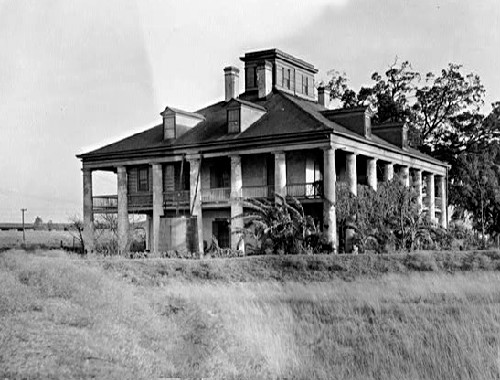
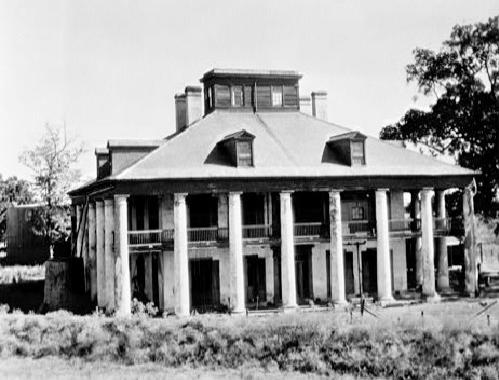
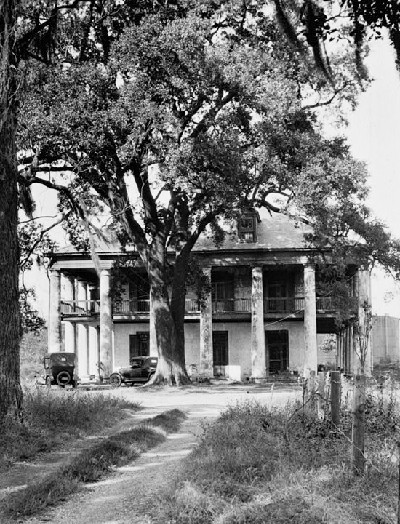
| Seven Oaks Plantation Jefferson Parish |
| Seven Oaks Boulevard runs along the perimeter of Bridge City, on the West Bank of the Mississippi River, in the shadow of the Huey Long bridge. The name of the street is the only hint remaining of a long-gone manor house described as "one of the most impressive of Louisiana's Greek Revival plantation mansions...second only to the grand Oak Alley plantation in architectural merit." |
| The photo at the top of the page was taken in 1923. The historic mansion was the home of descendants of one of New Orleans' first settlers,Michel Seringue, who was the contractor who built the first St. Louis Church and the first Ursuline Convent, both in the 1720's. |
| Seven Oaks, early 1930's; it was constructed in 1840. |
| Excerpts from the Historic American Buildings Survey compiled in the 1930's: |
| "Seven Oaks, neglected by its railroad company owners, is rapidly crumbling to ruin, surrounded by huge black oil tanks and the remnants of its once beautiful oaks. Once the residence of a wealthy sugar planter, Camille Zeringue, a descendant of one of New Orleans' first settlers. |
| "The history of the plantation goes back even farther into French Colonial history than the family who once lived there. Originally, it was one of the concessions granted in 1719 by John Law's Company of the Indies to Monseigneur LeBlanc, French Minister of State, and associates. |
| "The first LeBlanc settlers sailed from the port of L'Orient, France in 1720, among them, Ignace Francois Broutin, who would become the architect of most of the official buildings in the new colony. Some time prior to 1754, it was sold to Claude Villare Dubreuil, who was contractor for the King's buildings and works in Louisiana at that time. |
| "In 1794, the property came into the hands of Michel Zeringue. After his death in 1816, his son, Camille, managed the plantation for his mother and sisters (one of his sisters later married Joseph Lombard, Lombard Plantation link is at bottom of page). It's believed that Camille had the Seven Oaks mansion constructed in 1840. |
| "The home changed hands several times after Camille's death and, in 1912, was sold to the Missouri Pacific Railroad, who owned it at the time of the survey. The report goes on to say: "It is tragic that this fine house is being allowed to fall into decay." |
| Side view, showing the plantation's cistern, ca. early 1930's. |
| By 1940, the belvedere and dormers are gone...the historic old home has gone from wreck to ruin. |
| The link to this page is: http://old-new-orleans.com/NO_Seven_Oaks.html A page you might also enjoy: Lombard Plantation Back to Old New Orleans Whispers - Home |
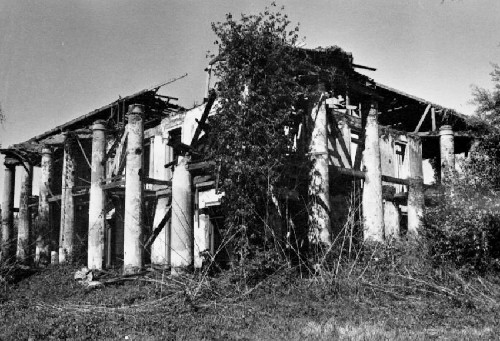
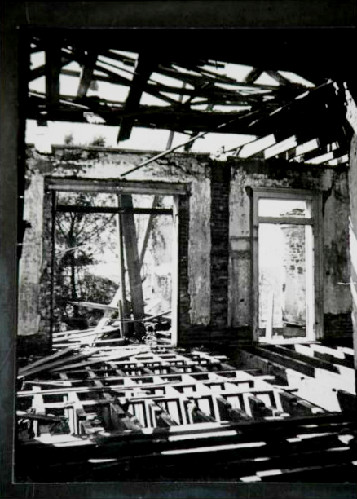
| I didn't know what happened to Seven Oaks until I received a message from James Fiegler, who let me know that the house was still standing in 1974, but Marathon Oil demolished it a few years later. He very kindly shared the photos above and below, which he took in 1974. |